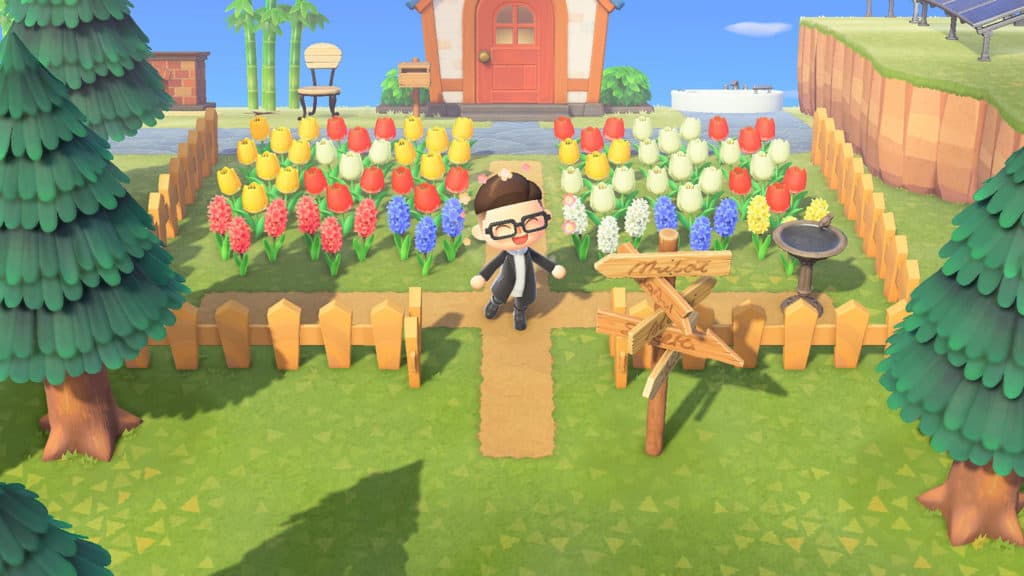Video Gamer is reader-supported. When you buy through links on our site, we may earn an affiliate commission. Prices subject to change. Learn more
I admit, after the recent Nintendo Direct on Animal Crossing: New Horizons, I was worried island living would be too easy and too straightforward—that the player would be cutting their island into neat slices of ready returns. I went to Nintendo to play New Horizons for a few hours, and these worries were whisked away with the new crafting and customisation mechanics.

Tom Nook, ever-watchful on his investments, provides a workbench and blueprints for the player to learn to create tools and objects. Gathering sticks lets the player make a fishing rod, if a flimsy one that’s held together with mutual trust. Requiring tools to be made from the resources on the island is a wonderful way to slow the simulation game. It also makes each choice meaningful, because, if you want to craft something, you’ve got to put the legwork in to collect the material. And there might be some serious legwork if you shake a tree and a wasp nest falls out.

The player arrives in a tent, but they are able to ask for a house, and the costs and extensions on offer are managed by Nook, Inc. Furniture and decor may be purchased, but, again, a lot of it is craftable, and this makes it feel like you’re really building a home here on the island. That’s a cliche, I’m aware, but it’s helped by the hard graft required to get it how you like it. Before, you’d wait for the right item to appear in the shop, or you could “trade” that item with your neighbours, using an underhanded method where you’d send them loads of tat until the item was transferred to the community recycling box (FYI: I never did this). Now, it is earned through effort and made unique through custom designs—created in-game or taken from New Leaf or Happy Home Designer. If twenty-three-year-old me is in love with this idea, then nine-year-old me would have had the game practically welded to her hands.

With its Switch debut, Animal Crossing looks better than ever before in New Horizons, and there’s a homeliness that the player will strive towards. We were encouraged to remodel a player’s home in the preview, and part of me balked at the idea, because her room looked lovely. There was a welcome mat, a stew bubbling on the table, and a cozy corner with the sofa and TV. Other Animal Crossing games prioritised cohesive collections of furniture and placements that got you lots of points from the Happy Room Academy. In this Animal Crossing game, it seems to throw all of that out of the window and favour a higgledy-piggledy mish-mash of things that make you happy.

I did remodel her home, though. Riffing off of Happy Home Designer, the possibilities for interior design were astounding. It might seem like a trivial thing, but the camera is now freer than it was in the previous games. Players are able to swivel and zoom to their heart’s content, and turn the lights on and off in different hues, to get their homes looking exactly how they want them. In the interior design mode, items are moved and rotated at the press of a button, so there’s no tripping over or fencing yourself in to get those end tables where they need to be. Moreover, the game also lets the player multi select items—for example, a chest of drawers and the indoor plants upon it. This smoothes over a lot of my personal itty-bitty irritants when designing my house, because it always felt like it took too long and was too fiddly. And the placement grid seems to have been divided so that items slide a little at a time, rather than leagues at a time, to place the furniture just right. I can’t wait to see what other players make in their homes, because the game truly encourages creativity to be boundless—figuratively and literally.

In New Horizons, players are able to decorate the outdoors for the very first time, and that opens up even more opportunities for a unique island. An outdoor gym, an ornamental garden, a picnic area, there is so much to make and so much space to create it in. And, once again, these must be earned and crafted through the time that the player puts into their island, and these plots will be visited by residents that interact with the objects, chilling out in the spring air.
There’s a lot that’s new in New Horizons, and, by creatively and deliberately structuring its progression, it’s taken a leap into the unknown. Though I loved what I played, I don’t know if everyone will vibe with the crafting mechanics, when the basic tools of Animal Crossing have always been there from the beginning. However, the rewards for your efforts are so personal—and so pretty here on the Switch—that I hope players dive right into the game, and find that island life is what you make of it.
Animal Crossing: New Horizons comes to the Nintendo Switch on March 20.
